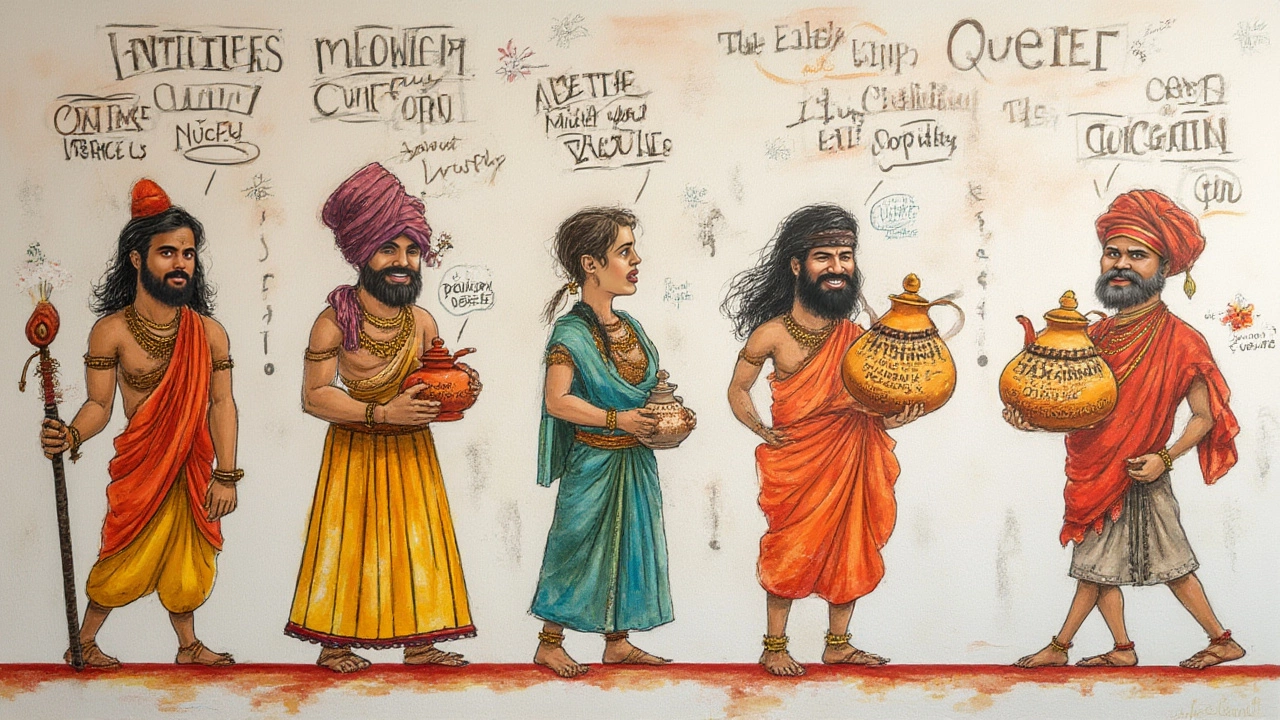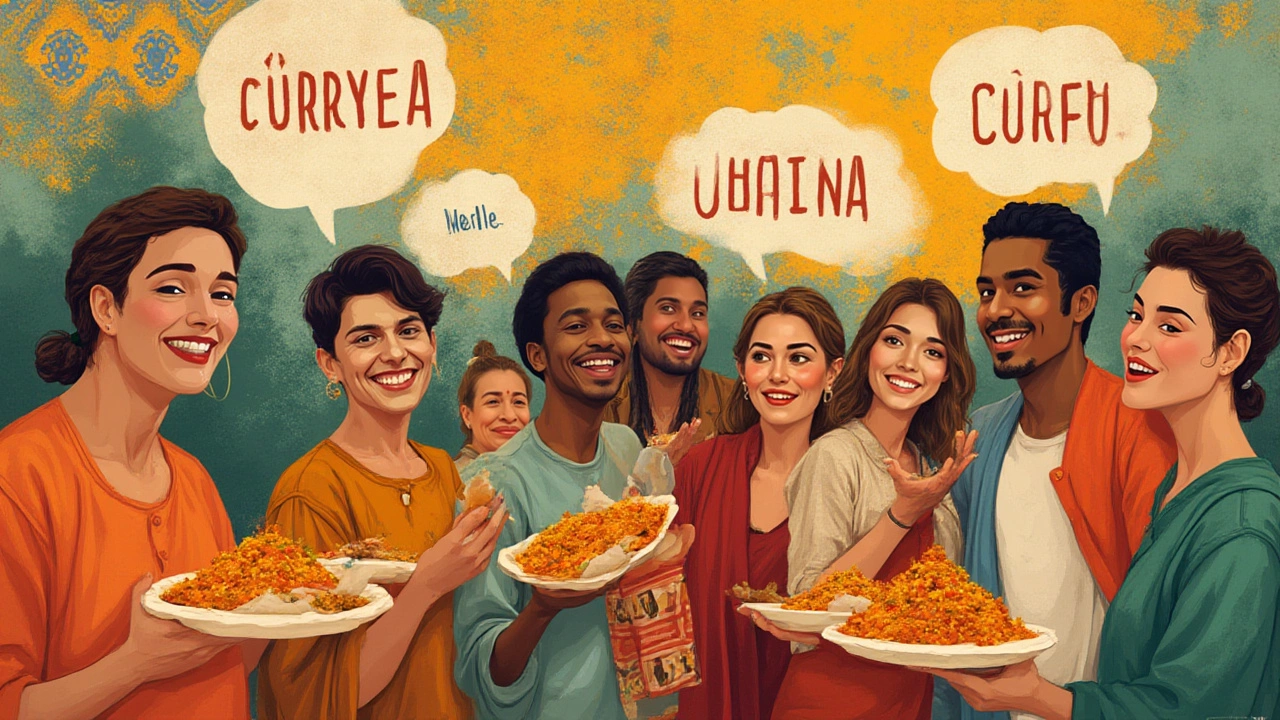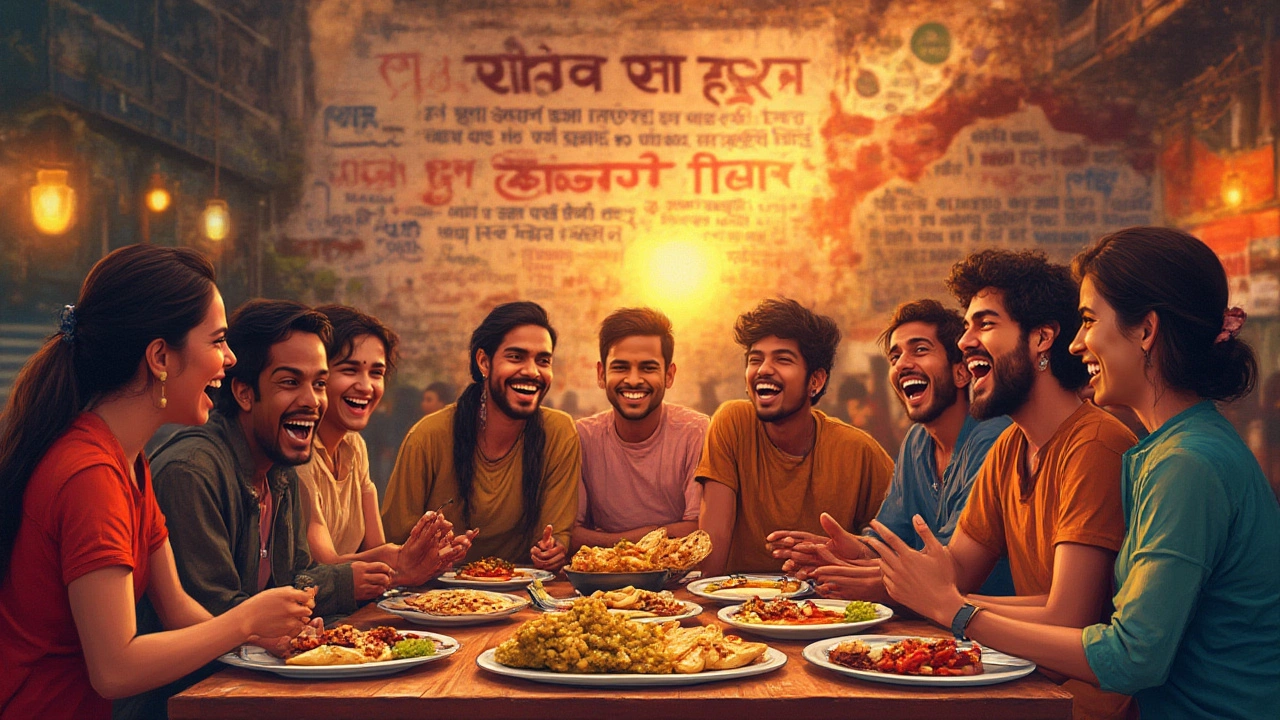13 Jul 2025
- 0 Comments
Order a ruby or fancy a balti? And what about those quirky words your friends toss around when the topic turns to Indian curry? Indian curry isn’t just a food obsession; it’s a playground for language, packed with slang words and nicknames borrowed from all over the world. Some are silly, some are endearing, but all of them reveal just how big a part curry plays in global food culture. So, what’s the slang for Indian curry? Let’s spill the spicy secrets and name-calling traditions hiding in plain sight.
Where Does Curry Slang Come From?
Don’t think for a second that curry slang popped up overnight. The story goes back to the colonial era, when British officers in India brought their new food love back home. But there’s more to it than just history lessons and textbooks. Indian curry entered British pop culture in the 19th century and quickly found a new home on the streets of London, Birmingham, and Manchester. It became a late-night treat and a Saturday night staple, leading to a swirl of playful slang. Cockney rhyming slang is a huge culprit — that wacky, sing-songy British way of twisting words for fun. "Ruby Murray," for example, is rhyming slang for curry. Ruby Murray was a pop singer in the 1950s with a name that rhymes with curry, so in pubs and taxi queues, “fancy a Ruby?” means you’re hungry for spicy magic.
But it’s not just about rhyming or British banter. Indian communities themselves use shortcuts and nicknames for specific curries or general curry talk. In Mumbai, you might hear “sabzi” (meaning any vegetable curry), while “tadka” (tempered) is shorthand for a spiced-up lentil mix. Across the Atlantic, curry-loving Americans have coined terms like “curry bomb” (for especially fiery dishes) or “naanwich” for those wraps stuffed with curry and folded naan bread. The upshot? Once people fall in love with curry, they want fun ways to talk about it, and language just follows their cravings.
Even in Australia, curry slang takes on a cheeky twist. In some cricket circles, “Going for a curry” doesn’t mean you’re eating — it’s code for an informal get-together or post-match hangout. In Singapore and Malaysia, Indian curries are commonly called “kari” (pronounced kaa-ree), echoing the Tamil and Malay word for curry, and sometimes get cuter nicknames like “flood rice” for rice drowning in spicy gravy. Every region spins its curry lingo, mixing up a batch of phrases as colorful as the spices in a masala dabba (spice box).
The Funniest and Most Popular Curry Nicknames
If you’re curious about which slang words really stick, “Ruby” tops the list in the UK. Even now, you can overhear folks inviting each other for a “Ruby” after a night out. Along with “Ruby,” there’s “Curry Mile,” a street packed with Indian restaurants; and “Anglo-Indian,” jokingly used to describe fusion dishes that aren’t quite traditional, aren’t quite Western. Then there are some iconic menu items with their own fame. “Balti,” for instance, is both a style of curry and a casual name for spicy food, especially in Birmingham. The word comes from the metal serving bowl, but now people order a “Balti” just as they would ask for pizza.
“Madras” is often short for a hot, red curry — “Madras” is city-turned-dish, just like “Vindaloo,” which has become shorthand for anything super spicy. “Tikka” (as in chicken tikka) is tossed around for any grilled morsel, while “Korma” signals something mild and creamy. In Ireland and Scotland, “curry chip” is the beloved slang for chips (fries) drenched in yellow curry sauce — so local, it’s almost a rite of passage for students.
Back in India, terms get more specific. “Rajma” refers to kidney bean curry, “palak” to spinach-based, “chole” to chickpea, and “dal” to lentil curries. But for slang, “jugaad curry” describes a thrown-together, resourceful mix using whatever’s in the fridge. Street food fans will just say “masala,” meaning anything loaded with spice. And if you happen to hear someone ask for “ghee roast” down south or “bhuna” in the UK, they’re just using local lingo that’s traveled and taken root. Some teens and food influencers try to make up new words — “currytastic” shows up on Instagram, while home cooks dubbing their invention “currylicious” is pretty common in recipe blogs. Does every term catch on? Nope — but “Ruby” and “balti” seem to be sticking around for the long haul.
Food delivery apps have jumped in, too, inventing badges and categories like “spicy sensations” for curries with a punch or “butter blast” for rich, creamy gravies. In some kitchens, the staff will say “Send a vindy!” when someone orders a vindaloo — makes it sound almost like a code word for adventure. And let’s not forget the Indian parents who just call everything “sabzi,” leaving the specifics up to your imagination unless you ask twice.

Why Slang for Curry Matters in Food Culture
This isn’t just about being cheeky or sounding clever. The way people invent and use slang for curry shows how deep food goes in culture. Slang words create a sense of belonging — when you know what “Ruby” means, you’re in on the secret. It’s about making food more approachable, breaking the ice between old friends, or helping new arrivals feel at home at the table. If you ever find yourself in a British “curry house,” tossing out words like “Ruby,” “balti,” or “jalfrezi” signals that you know your stuff — or at least you’re ready to have some fun with it.
There’s another side, too. Some old slang carries hints of stereotypes or jokes that haven’t aged well, especially from times when British society saw curry as “exotic” or “foreign.” Language is always shifting, though, and these terms evolve along with changing attitudes. New generations are ditching the outdated terms and leaning into the creative, friendly side of slang. In Indian cities, you can hear young folks making up their own words — blending Hindi, English, and internet lingo in wild new ways. Food bloggers from Chennai, Kolkata, and Delhi have started referring to everyday curries as “OG masala” or calling their favorite cheap joint a “curry shack.” TikTok and Instagram are driving a wave of foodie slang: someone’s “dead” (meaning thrilled or shocked) over a spicy “naan-za” (naan pizza), and “curry mood” is code for craving something flavorful and saucy.
Curry slang also makes food recommendations more fun. Instead of a boring “try the dal makhani,” a friend might say, “Get the black velvet — that’s dal magic!” It breaks barriers, sparks conversations, and even turns uncertain eaters into curry fans by making dishes sound less intimidating and a lot more memorable.
Tips for Using and Understanding Curry Slang
So how do you join the club? If you’re heading out for Indian food, it’s worth picking up a few go-to slang terms. Don’t be shy — ask your friends or your server what a particular word means. Usually, you’ll get stories, laughter, and sometimes even a free dish to try. When ordering in the UK, remember these hotspots: “Ruby” means curry, “balti” is both a dish and a style, and “naanwich” is self-explanatory (naan bread + sandwich filling). In street food stalls, look out for “masala pav” (spiced-up bread), “anda curry” (egg curry), or the ever-popular “currywurst” in German-Indian fusions.
If you travel across India, get ready for regional terms. In Punjab, “maa di dal” is the beloved black lentil dish, while “bhindi masala” (okra curry) in Mumbai is a staple relatable slang term. Down south, “korma” can mean a coconut-y curry, and “poriyal” is a dry, stir-fried veggie companion. Listen carefully, ask questions, and you’ll pick up a toolkit of curry lingo from every city. Don’t be afraid to play along — curry slang is more about fun than rules.
For cooking at home, experiment with your own names. Why not give your personal favorite curry a nickname? Maybe your peanut-spiked spinach curry becomes “The Green Hulk,” or your fiery chicken creation gets dubbed “Heatwave.” If you share your recipes, using the slang adds personality and soul to your posts. Just be mindful — stay away from slang that feels outdated or disrespectful; food slang should be inviting, not exclusive. Follow Indian food creators online, where slang shifts fast and shows up in captions, hashtags, and comments. The trend right now: cute mashups, emoji codes (lots of fire and heart eyes with curry dishes), and words like "currynator" for anyone who can handle extra spice.

Strange But True Curry Slang Stories
Curry slang isn’t just for giggles — some stories behind the words are too funny to make up. Take “Ruby Murray,” for instance. Most people using it today have no idea she was a chart-topping singer with twelve hit singles in the 1950s. Her name lives on in every British pub, celebrated way more for curry than for music. Or there’s “balti,” which supposedly means “bucket” in Hindi, Urdu, and Bengali — and yes, traditional balti curries are served bubbling hot in small steel buckets in Birmingham. In Glasgow, “half and half” means ordering curry with half rice and half chips. Ask for “a cheeky korma” after midnight, and you’ll be served the mildest curry possible with a wink. The “curry mile” in Manchester isn’t really a full mile, but it packs in so many Indian restaurants that the nickname stuck and now appears on postcards and tourist brochures. Some slang even sneaks into politics and sports: politicians make speeches about “curry houses” to win immigrant votes, and British football fans call their spicy snacks “halftime heat.”
Indian cinema and TV haven’t been left out either. The comedy film “Curry No. 1” pokes fun at the obsession with giving curries numbers, colors, and outrageous names for drama. Online, there’s a meme storm about “curry face” — the look you make when a dish turns out way hotter than expected. You’ll find nods to curry slang in music, stand-up comedy, and even business — startups in Bengaluru and Mumbai use names like “CurryUp” for rapid delivery or apps that track your favorite masalas.
And finally, a bit of trivia: the Guinness World Record for the largest curry was set in Singapore with a 15,000-liter fish curry, and people on-site jokingly called it “the mother of all rubies.” There’s even a Curry Awards night in London — winners sometimes get dubbed “Curry Kings” or “Queen of Spice” by local foodies, adding to the vocabulary each year.
So next time you’re hungry or just in a mood for something feisty, try whipping out a bit of curry slang. Slip a “Ruby” into the conversation, invent your own curry code, or simply listen for the words that sizzle almost as much as the food. From late-night British diners to buzzing Indian kitchens, and even your own table, the language of curry keeps growing — as flavorful and fun as the dish itself. Anyone else craving a balti right now?
